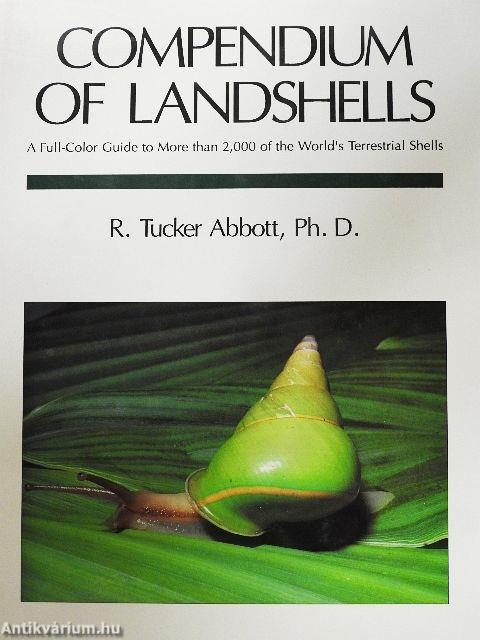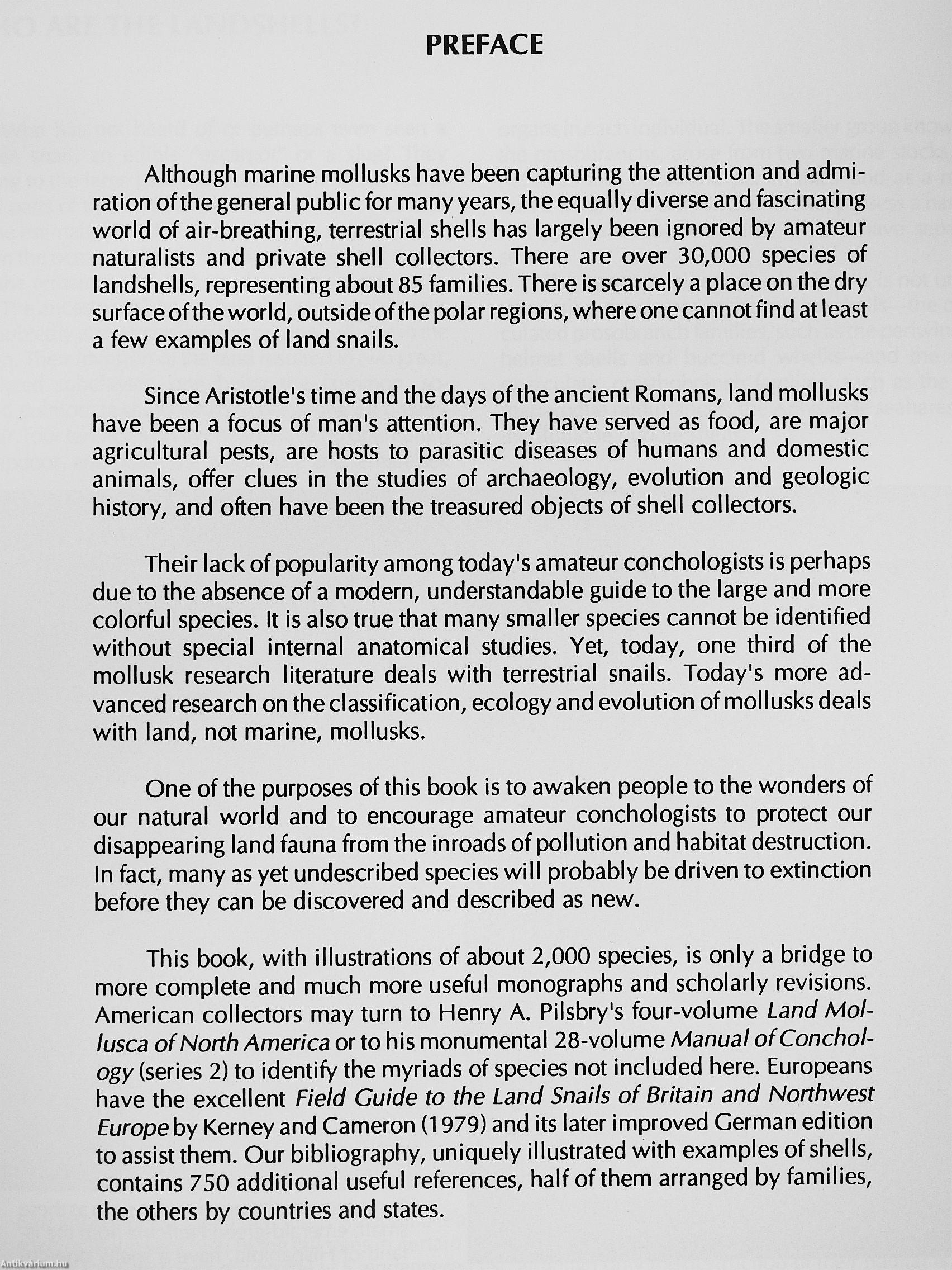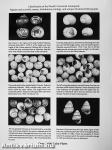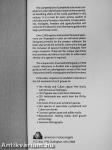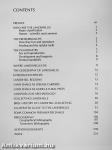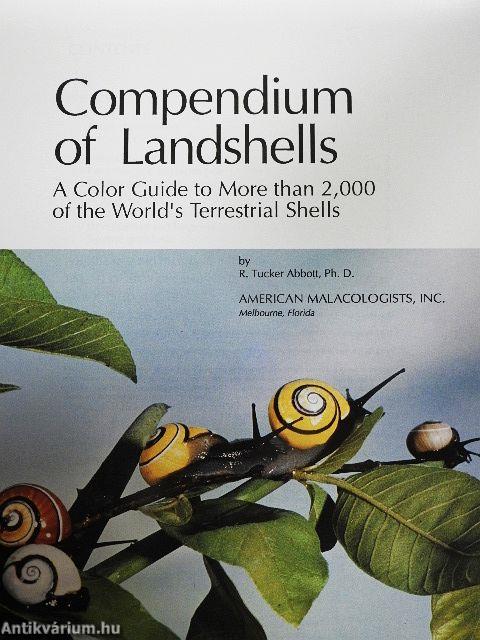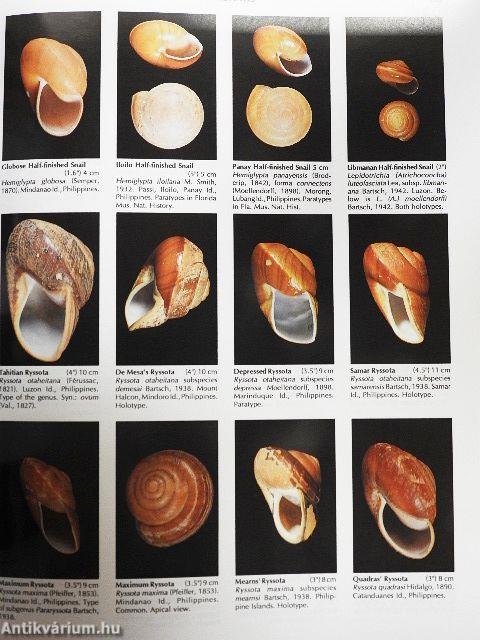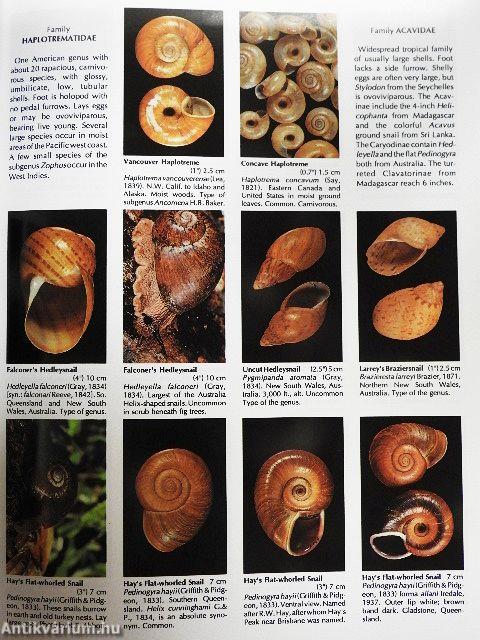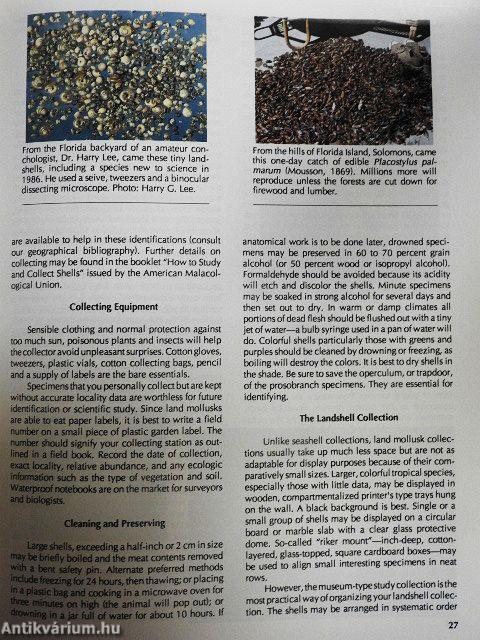1.104.094
kiadvánnyal nyújtjuk Magyarország legnagyobb antikvár könyv-kínálatát

VISSZA
A TETEJÉRE
JAVASLATOKÉszre-
vételek
Compendium of Landshells
A Full-Color Guide to More than 2,000 of the World's Terrestrial Shells
| Kiadó: | American Malacologists, Inc. |
|---|---|
| Kiadás helye: | Melbourne |
| Kiadás éve: | |
| Kötés típusa: | Fűzött keménykötés |
| Oldalszám: | 240 oldal |
| Sorozatcím: | |
| Kötetszám: | |
| Nyelv: | Angol |
| Méret: | 28 cm x 22 cm |
| ISBN: | 0-915826-23-2 |
| Megjegyzés: | Színes fotókkal. |
naponta értesítjük a beérkező friss
kiadványokról
naponta értesítjük a beérkező friss
kiadványokról
Előszó
TovábbFülszöveg
Classification of the World's Terrestrial Gastropods Popular and scientific names, distributions, biology, and unique illustrated bibliography
Best known is the typical incli-long Painted Polymita, Polymita picta (Born, 1778). It is the largest and most fragile of the Oriente species. Professor de la Torre described this quite common form as iofasdata. Note the dark, wide border around the base of the columella.
The smaller and thicker-shelled Sulfur Polymita, Polymita sulphurosa (Morelet, 1849), exhibits many color variations within the same colony. The original form was completely ye Now. These are color types of the color form flammu/aia Torre, 1950. All natural size.
The Fly-specked Polymita is characterized by a pinkish base and minute blackish fly-specks scattered over the outside of the shell. Although muscarum Lea, 1834, is the usual name applied to this species from Banes, Cuba, the earlier name globulosa (Férussac, 1821) should probably be used.
In the flat, high... Tovább
Fülszöveg
Classification of the World's Terrestrial Gastropods Popular and scientific names, distributions, biology, and unique illustrated bibliography
Best known is the typical incli-long Painted Polymita, Polymita picta (Born, 1778). It is the largest and most fragile of the Oriente species. Professor de la Torre described this quite common form as iofasdata. Note the dark, wide border around the base of the columella.
The smaller and thicker-shelled Sulfur Polymita, Polymita sulphurosa (Morelet, 1849), exhibits many color variations within the same colony. The original form was completely ye Now. These are color types of the color form flammu/aia Torre, 1950. All natural size.
The Fly-specked Polymita is characterized by a pinkish base and minute blackish fly-specks scattered over the outside of the shell. Although muscarum Lea, 1834, is the usual name applied to this species from Banes, Cuba, the earlier name globulosa (Férussac, 1821) should probably be used.
In the flat, high plains to the northeast of Santiago de Cuba one can find this bright yellow and red striped species, Polymita venusta (Gmelin, 1791). They live 10-25 feet above ground, and are more active at night An all-russet-red form occurs in the Sierra Maestra.
The hills along the southern coast of Oriente Province are the home of the Sulphur Polymita. These delicately-hued Lilac PolymiUs are paratypes from the original lot described in 1950 by Dr. de la Torre as vlolacea. Note the oblique "flames" of color in this species.
Brochero's Polymita from the Cape Maisi region of Oriente was named brac/ieri after General Cregorio Broch-ero by Pfeiffer in 1864. These are paratypes of Torre's color form cuestana which has a pink columella. Arango in 1878 amended the name to bmchemi.
Over 2,000 Color Plates
The Compendium ofLandshells is the most complete full-color identification book on the terrestrial, air-breathing shells of the world published in this century. It is a must for every serious student of mollusks and all amateur naturalists. Conservationists, ecologists, foresters and agriculturalists will welcome this beautiful and informative guide to the larger pulmonate snails.
Over 2,000 species and several thousand specimens are illustrated in color on individual plates. Designed primarily for the amateur collector, the book also serves the scientific community through the inclusion of several hundred holotypes from major museums. These are the unique specimens that scientists and others must refer to when exact identity of a species is required.
The unique color-illustrated bibliography of900 crucial references is divided into a geographical guide as well as a phylogenetic survey of the most important scientific monographs and fami ly reviews.
Particularly important to landshell collectors is the full treatment of such groups as:
• The Florida and Cuban Liguus Tree Snails, with pictures of holotypes.
• 120 Papuina tree snails from Melanesia.
• 250 l-lelicostyla tree snails from the Philippines.
• 60 Giant African and achatinid species.
• 240 species of operculate cyclophorid and Cuban annularids.
• Common garden pests and edible snails.
• Reproduction, feeding habits, shell growth and ecology.
• Extensive bibliography
uilw aiTierican nnalacologists P.O. Box 1192, Burlington, MA 01803 Vissza
Témakörök
- Idegennyelv > Idegennyelvű könyvek > Angol > Szépirodalom > Gyermek- és ifjúsági irodalom > Ismeretterjesztő
- Idegennyelv > Idegennyelvű könyvek > Angol > Természettudományok > Egyéb
- Természettudomány > Állatvilág > Állatok evolúciója > Alsórendű állatok
- Természettudomány > Állatvilág > Állatok evolúciója > Gerinctelenek
- Szépirodalom > Gyermek- és ifjúsági irodalom > Ismeretterjesztő > Idegennyelvű > Angol
- Szépirodalom > Gyermek- és ifjúsági irodalom > Ismeretterjesztő > Természettudományok > Állatvilág



